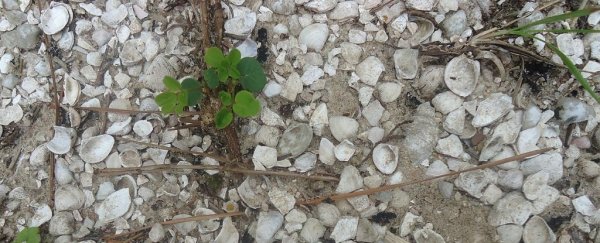Archaeologists have linked rising and lowering sea levels in the Atlantic Ocean to the ebbs and flows of ancient civilizations in southern Brazil.
The findings, which incorporate several lines of past archaeological evidence, suggest even large, resilient, and cooperative coastal communities can easily go out with the tide.
When analyzing and dating a series of prehistoric shell 'mountains', known as sambaquis in the local language, researchers noticed some significant changes in southwestern Brazil about 2,500 years ago.
At this time, the size and frequency of sambaqui sites suddenly began to decrease, possibly indicating the dissolution of what were, for millennia, dense and stable shellfish-eating populations.
Other research in the area has also identified a rapid reduction in sambaquis around this time, but some researchers think these changes mostly occurred from the rise of ceramics and crops. The use of this new technology meant populations didn't need to rely as much on fish or mollusks, leading to a reduction in shell piles.
However, the new study found the decline of shell middens started before the introduction of pottery. So why, then, were sambaqui practices abandoned?
The answer might have to do with an extreme, retreating tide. By reassessing human and animal remains from Babitonga Bay – home to Brazil's largest concentration of sambaquis – researchers have put forward a new timeline.
According to more than 400 radiocarbon dates, the spread of ceramics in Babitonga probably started around 1,200 years ago.
A decline of sambaqui activities, on the other hand, started much earlier, around 2,500 years ago, before leading to "dramatic abandonment" about 2,200 years ago.
At this time, known as the Late Holocene, pollen, sedimentary and geochemical data from the bay show significant changes in coastal and marine ecosystems.
Cold fronts in southern Brazil were becoming more common, and as more water began to turn to ice, sea levels were also retreating.
By a thousand years ago, sea levels in southern Brazil had dropped 1.6 meters from their peak about 7,000 years ago.
This led to significantly more drylands and mangrove systems, which probably impacted the availability of subtidal mollusks, fishing grounds, and edible plants. Prehistoric populations that once relied so heavily on these foods had to suddenly compete for dwindling resources.
"This event possibly represents a turning point in the community-based and resource-pooling nature of large ceremonial sites, which would have become unsustainable in most areas," the authors of the paper suggest.
"As a result, several nucleated groups would have dissolved into smaller, dispersed and relatively independent social units organized in short-lived residential and logistic settlements that are notoriously less visible archaeologically."
The rupture of this social fabric is further supported by an increasing number of small and shallow archeological sites from about 2,000 years ago.
These more recent sites are also more likely to contain baited hooks for catching fish in deeper waters and ceramics to keep food for longer.
Bringing all these lines of evidence together, the authors suggest there were numerous cultural drivers that exacerbated social changes in southern Brazil thousands of years ago, but that the initial trigger was probably climate change.
The decline of shellfish eating due to a receding tide could have created the perfect environment for the introduction of pottery and baited hooks.
These findings provide societies today with an important lesson: We are only as solid as the land we rely on, and soon, much of that ground could be lost.
Anthropogenic climate change is expected to drive sea levels up by about 0.3 meters (12 inches) by the end of the century compared to the start of the century. Practically, that means roughly half of our planet's sandy beaches could slip beneath the waves.
When more than a third of the current global population strongly relies on ocean, coastal and marine resources, the consequences for many communities could be catastrophic.
The study was published in Scientific Reports.
